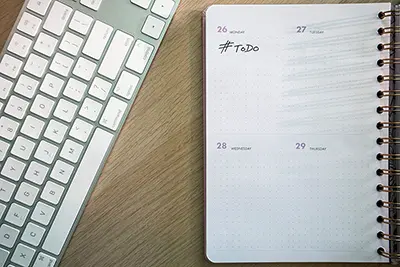Introduction: When Two Systems Collide
Picture this: Sarah from your accounts team emails to say she's pregnant and wondering how her maternity leave will affect her annual leave entitlement. Meanwhile, Tom wants to know if he can tack his unused holiday onto his paternity leave. And let's not even start on the conversation about shared parental leave arrangements.
If you've been in HR long enough, you'll know that managing parental leave alongside annual leave isn't exactly a walk in the park. It's one of those areas where employment law meets practical reality, and sometimes they don't play nicely together. The good news? With the right approach and systems in place, you can navigate this complexity without losing your sanity or falling foul of employment legislation.
This article explores the intricate relationship between parental leave and annual leave systems, covering the legal requirements across the UK and EU, practical integration challenges, and proven strategies for managing both seamlessly. Whether you're wrestling with legacy spreadsheets or considering a digital solution, we'll help you understand what works, what doesn't, and why getting this right matters more than ever.
The Legal Landscape: What You Must Get Right
Let's start with the fundamentals. As of 2025, statutory maternity pay rates have increased to £184.03 per week, and the rules around parental leave continue to evolve. But here's what many HR professionals miss: the interaction between parental leave and annual leave isn't just an administrative nicety—it's a legal requirement.
Under UK employment law, employees on maternity leave continue to accrue annual leave throughout their absence. The European Court of Justice in the Gomez case held that a woman must be able to take the annual leave that she is entitled to at a time outside her maternity leave. This means you can't simply ignore holiday entitlement during parental leave periods.
For paternity leave, the picture is slightly different but equally important. Recent changes in 2025 allow fathers to split their two weeks of statutory paternity leave into separate one-week blocks, adding another layer of complexity to your leave management. Partners can now take these blocks at different times within the first year, rather than as one continuous period.
The shared parental leave system adds further intricacy. Parents can share up to 50 weeks of leave and 37 weeks of pay, potentially creating multiple overlapping leave periods that your annual leave system needs to handle gracefully.
The Accrual Principle
Here's where it gets interesting. During ordinary and additional maternity leave, employees are entitled to all their terms and conditions, apart from remuneration, as though they are at work. They will therefore be able to accrue annual leave and bank holidays during this period. This applies equally to adoption leave and shared parental leave.
What this means in practice is that someone on a full year's maternity leave will return with their standard annual leave entitlement fully intact, plus any public holidays that fell during their absence. Yes, you read that correctly—they haven't "used up" their holiday while they've been off.
Integration Challenges: Where Systems Fall Apart
Now that we've established the legal framework, let's talk about where things typically go wrong. In my experience, most annual leave systems weren't designed with lengthy parental leave periods in mind. They're built for the straightforward world of two-week summer holidays, not the complex reality of modern family leave.
The Carry-Over Conundrum
One of the biggest headaches involves annual leave year boundaries. Where a woman is unable to take her annual leave before she starts her maternity leave due to the early birth of her child or pregnancy-related sickness absence, or where a woman's maternity leave overlaps with the annual leave year to a significant extent, exceptions should be made to carry over policies.
This sounds straightforward in theory, but in practice it means your system needs to handle exceptional carry-over scenarios that your standard policies might not cover. What happens when someone's maternity leave spans two annual leave years? How do you track and manage the additional days they're entitled to carry over?
The Keeping in Touch Days Puzzle
Then there are Keeping in Touch (KIT) days to consider. Employees can work up to 10 days during maternity leave without affecting their statutory pay. But how does this interact with their annual leave entitlement? What if they want to use annual leave to extend a KIT day into a longer period? Your system needs to distinguish between different types of working arrangements during what is technically still a leave period.
Enhanced Pay Complications
If your organisation offers enhanced maternity or paternity pay beyond statutory requirements, this creates additional complexity. How do you track different pay rates across different leave types? What happens when someone transitions from enhanced pay to statutory pay, or from paid to unpaid leave?
System Requirements: What Actually Works
Given these challenges, what should you look for in a system that can handle both annual leave and parental leave effectively? Here are the non-negotiables based on hard-won experience:
Flexible Leave Types and Categories
Your system needs to recognise multiple leave types simultaneously. Someone might be on maternity leave while accruing annual leave, with the ability to add KIT days or transition to shared parental leave. A good system will track these overlapping entitlements without getting confused.
Automated Accrual During Absence
Manual calculation of leave accrual during extended absences is a recipe for errors. Modern leave management systems should automatically calculate continued accrual during parental leave periods, including adjustments for public holidays and varying leave year boundaries.
Look for systems that can handle different accrual rules for different leave types. Annual leave continues to accrue during maternity leave, but other types of leave (like study leave or sabbaticals) might have different rules.
Carry-Over Exception Handling
Your system should be able to handle exceptional carry-over scenarios without requiring manual intervention for every case. This means configurable rules that can automatically grant additional carry-over allowances for employees returning from parental leave.
Integration with Payroll
The system needs to work seamlessly with your payroll processes, especially given the complexity of different pay rates during various leave periods. It should track when statutory pay periods end, when enhanced pay applies, and how KIT days affect overall payments.
Best Practices: Learning from What Works
Having worked with numerous organisations on this challenge, here's what consistently makes the difference between smooth operations and administrative chaos:
Communicate Early and Often
Start the conversation about annual leave and parental leave integration as soon as someone notifies you of their pregnancy or adoption plans. Don't wait until they're about to return to work to figure out how many holiday days they've accrued.
Create a simple guide that explains how annual leave works during parental leave. Include practical examples: "If you take 12 months' maternity leave, you'll return with your full annual leave entitlement for the year, plus any public holidays that occurred during your absence."
Plan for Leave Year Boundaries
Develop clear policies for managing annual leave when parental leave spans multiple leave years. Consider allowing extended carry-over periods for returning parents, and make sure your system can track these exceptions automatically.
Regular Reviews and Updates
Employment law in this area continues to evolve. Government guidance gets updated regularly, and you need systems that can adapt to these changes without requiring complete overhauls.
Schedule quarterly reviews of your parental leave and annual leave integration. Look at cases that required manual intervention and ask whether your system could be configured to handle them automatically next time.
Training for Line Managers
Your line managers need to understand how these systems interact. They're often the first point of contact for questions about leave entitlements, and getting it wrong can lead to confusion, compliance issues, and frustrated employees.
Provide clear decision trees: "If someone asks about taking annual leave before their maternity leave ends, here's what you need to check..." Make it practical and actionable, not theoretical.
Common Pitfalls: What to Avoid
Let me share some of the most frequent mistakes I've seen organisations make, so you can sidestep them entirely:
Assuming Annual Leave is "Paused"
This is probably the most common error. Some HR teams think that because someone is on parental leave, their annual leave entitlement stops accruing. Not only is this wrong legally, but it creates significant problems when employees return to work with far fewer holiday days than they're entitled to.
Inflexible Carry-Over Policies
Standard "use it or lose it" policies don't work for employees returning from extended parental leave. You need flexibility built into your system to handle exceptional circumstances, and you need it automated so it doesn't require manual intervention every time.
Poor Integration Between Systems
Having separate systems for annual leave and parental leave management is asking for trouble. Data gets out of sync, manual reconciliation becomes necessary, and errors creep in. Integration isn't just about convenience—it's about accuracy and compliance.
Inadequate Documentation
When someone returns from 12 months of maternity leave, you need clear records of their leave accrual, any KIT days taken, public holidays that occurred during their absence, and any carry-over entitlements. If this information is scattered across emails, spreadsheets, and manual notes, you're setting yourself up for disputes and compliance issues.
The Technology Factor: Making It Work Seamlessly
Let's be honest: trying to manage the interaction between parental leave and annual leave using spreadsheets or basic systems is like trying to perform surgery with a butter knife. It might technically be possible, but it's unnecessarily difficult and prone to errors.
Modern HRIS systems should handle these complexities automatically. They should track multiple leave types simultaneously, calculate accrual during different types of absence, handle carry-over exceptions, and integrate with payroll systems without requiring constant manual intervention.
But technology is only as good as the processes that support it. Even the best system won't help if your policies are unclear, your staff aren't trained, or your data is inconsistent.
Looking Forward: Preparing for Change
The landscape of parental leave continues to evolve. Recent changes to paternity leave flexibility are just the beginning, and organisations need systems that can adapt to future legislative changes without requiring complete overhauls.
Consider the direction of travel: more flexibility, more sharing options between parents, and increasingly complex arrangements that traditional leave management approaches simply can't handle effectively.
The organisations that get ahead of this curve—those that invest in proper integration between their annual leave and parental leave systems—will find themselves much better positioned to attract and retain talent in an increasingly competitive market.
Conclusion: Making It Work for Everyone
Managing the integration between maternity and paternity leave and annual leave systems doesn't have to be the administrative nightmare that many HR professionals experience. With the right combination of clear policies, appropriate technology, and proper training, you can create a system that works seamlessly for employees and administrators alike.
The key is understanding that this isn't just about compliance—though compliance is certainly important. It's about creating an employee experience that supports people through one of the most significant transitions in their lives. When someone can focus on their new family without worrying about whether their annual leave entitlements are being handled correctly, everyone wins.
Remember that the legal requirements around annual leave accrual during parental leave aren't going away. If anything, they're likely to become more complex as family-friendly employment legislation continues to evolve. The organisations that invest in getting this right now will be much better positioned for whatever changes lie ahead.
The technology exists to handle these complexities automatically and accurately. The legal framework provides clear guidance on what's required. The only question is whether your organisation is ready to embrace the integration that modern workforce management demands.
Start with your current pain points. Where are you spending too much time on manual calculations? Where are errors creeping in? Where are employees confused about their entitlements? These are your starting points for improvement, and addressing them systematically will gradually transform what is currently a source of stress into a competitive advantage.





